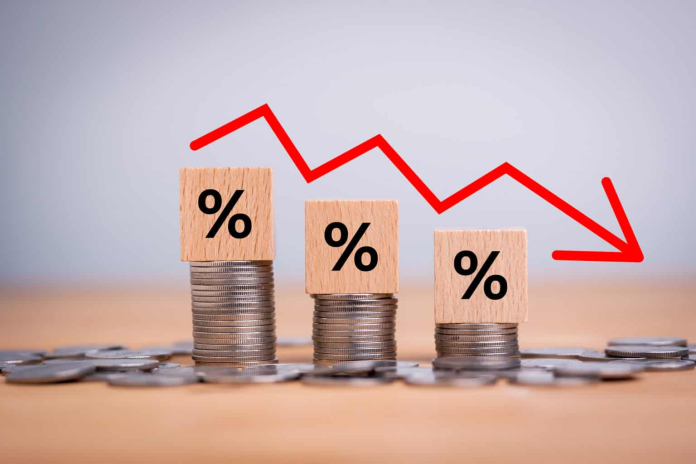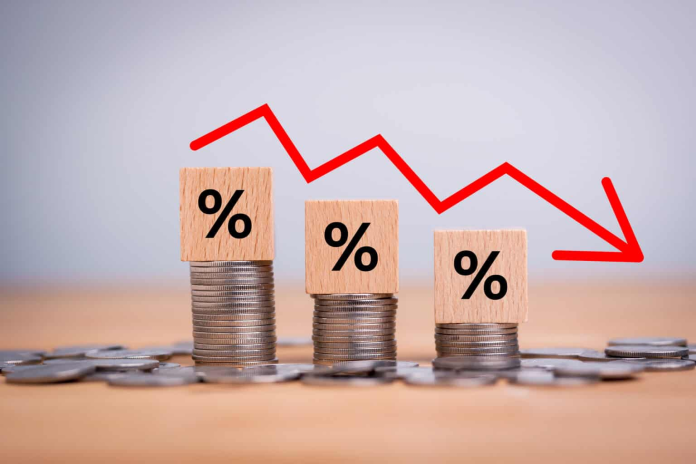
International ratings agency S&P Global Ratings has projected that Ghana’s inflation will remain below 10 percent in 2026, a level the country has not maintained since 2020, following years of battling high inflation that drained household incomes and weakened the cedi.
The forecast comes as S&P upgraded Ghana’s credit rating to B minus from CCC plus, assigning a stable outlook in recognition of the West African nation’s improving fiscal and external position. The ratings agency projects Ghana’s gross international reserves to rise to 10.4 billion US dollars, equivalent to 9 percent of gross domestic product (GDP), by the end of 2025, up from 6.8 billion dollars a year earlier.
The cedi has appreciated by about 30 percent against the US dollar since the beginning of 2025, representing its strongest performance in years. This currency strength, combined with a rebound in Ghana’s export earnings particularly from gold and cocoa, has helped boost the country’s foreign reserves and keep imported prices in check.
The forecast marks a sharp contrast to the situation at the start of 2025, when inflation was hovering above 20 percent. At the time, prices of food, fuel, and transport were straining household budgets following Ghana’s 2022 debt crisis and subsequent default in December of that year.
By mid 2025, the tide began to turn as tighter fiscal discipline and improved foreign exchange inflows helped stabilize prices. Ghana’s inflation slowed for the 10th straight month in October, with government statistician Alhassan Iddrisu saying that the drivers that once fueled double digit inflation are losing momentum while price stability is returning. S&P expects inflation to average 9 percent in 2026, returning to single digits for the first time since 2020.
S&P attributes this progress to higher global prices for gold and cocoa that have lifted export revenues, while government spending controls have reduced pressure on the local currency. The current account recorded a surplus of 3.4 billion dollars during the first half of 2025, up from 1.68 billion dollars for full year 2024. S&P forecasts a current account surplus of 4.6 percent of GDP in 2025, representing the largest on record for Ghana.
S&P noted that Ghana’s new administration, elected in December 2024, has introduced fiscal rules requiring a 1.5 percent primary surplus annually and a debt reduction target to 45 percent of GDP by 2034. These measures, alongside tighter procurement oversight and expenditure controls, aim to prevent the fiscal slippages that contributed to past crises.
The ruling National Democratic Congress (NDC) won December 2024 elections with a 46 seat parliamentary majority, enabling the administration to advance its reform agenda. Policy remains anchored by a three billion dollar International Monetary Fund (IMF) Extended Credit Facility programme running until May 2026.
However, the projection of keeping inflation below 10 percent in 2026 depends on whether Ghana can maintain this delicate balance. The government’s new fiscal rules, aimed at preventing overspending, are central to this effort and include stronger public financial management systems designed to stop the cycle of fiscal slippage.
S&P raised its 2025 growth forecast for Ghana to 6.0 percent, up from 4.5 percent earlier, citing robust performance across sectors and improved business confidence. The ratings agency projects Ghana’s real GDP growth to average 5.6 percent annually through 2028, driven by improved fiscal discipline, lower inflation, and stronger investor confidence.
S&P forecasts Ghana’s spending on debt interest payments will average 20 percent of government revenue through 2028, significantly lower than the 44 percent average recorded during the five years leading to default in 2022. The decline reflects successful completion of domestic debt exchange programmes and Eurobond restructuring completed in October 2024.
A fluctuation in international commodity prices could have consequences for this forecast. Should gold and cocoa prices tumble, the country’s foreign reserves would be affected, limiting the capacity of the Bank of Ghana to intervene to keep the cedi firm. A depreciation of the cedi could throw inflation off balance and put S&P’s forecast in disarray.
Weather patterns also play a significant role. Poor rains or floods could affect food production, pushing prices back up. S&P cautioned that Ghana’s ratings remain constrained by high debt service costs, weak institutional frameworks, and exposure to commodity price and weather shocks. It also noted that fiscal reforms have yet to be tested through a full economic and electoral cycle, a period when fiscal discipline in Ghana has historically weakened.
The economy remains vulnerable to weather and external shocks due to reliance on agriculture, representing 20 percent of GDP, and gold exports, comprising over 60 percent of total exports.
The Bank of Ghana has separately revised its timeline for achieving single digit inflation, now forecasting this milestone to be reached by the second quarter of 2026 instead of the first quarter as previously anticipated. Bank of Ghana Governor Dr Ernest Addison explained that the revised timeline was influenced by current economic conditions and ongoing structural challenges, emphasizing that achieving the new target would hinge on continued fiscal consolidation and adherence to IMF programme guidelines.
Dr Addison pointed out that structural issues in food production, exacerbated by climate change and inefficiencies in supply chains and transport, remain significant drivers of inflation. With food prices continuing to be volatile, the central bank anticipates further consultations with the IMF to refine its monetary policy under the programme’s consultative clause.
S&P stated it could raise the rating in the next 12 to 18 months if Ghana consistently sustained fiscal deficits at lower levels, reducing debt service costs and strengthening its access to foreign financing while its external position continued to strengthen, including the accumulation of additional foreign currency reserves.
Authorities are finalizing restructuring of the remaining five billion dollars worth of official and commercial debt, constituting approximately 7 percent of total public debt. However, S&P warned that disagreements between Ghana and some lenders, including the African Export Import Bank and the Eastern and Southern African Trade and Development Bank, could delay the full completion of the restructuring process.
The stable outlook balances Ghana’s improving fiscal and external metrics against remaining vulnerabilities, including high debt service costs, exposure to commodity price shocks, and the need to maintain reform momentum. If the forecast holds, 2026 could mark the first time in years that Ghana experiences genuine price stability, which could rebuild public confidence and attract more investment. However, as S&P notes, the country’s economic progress remains fragile.
